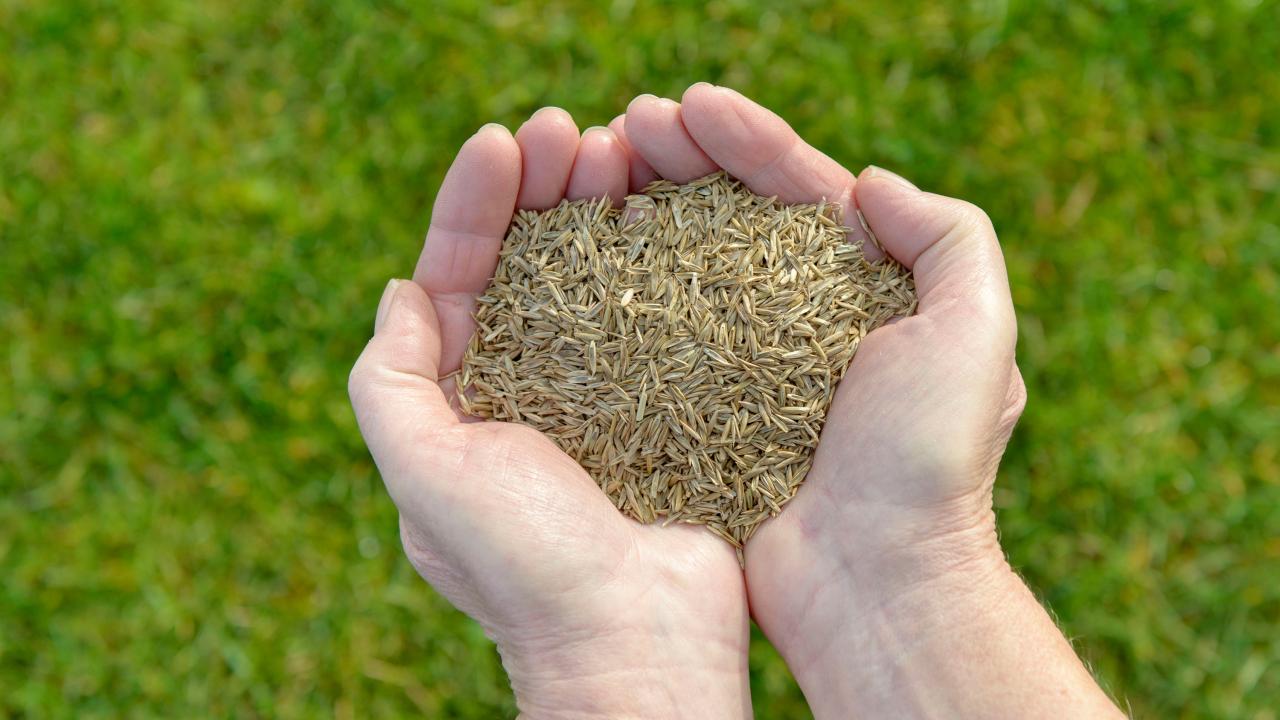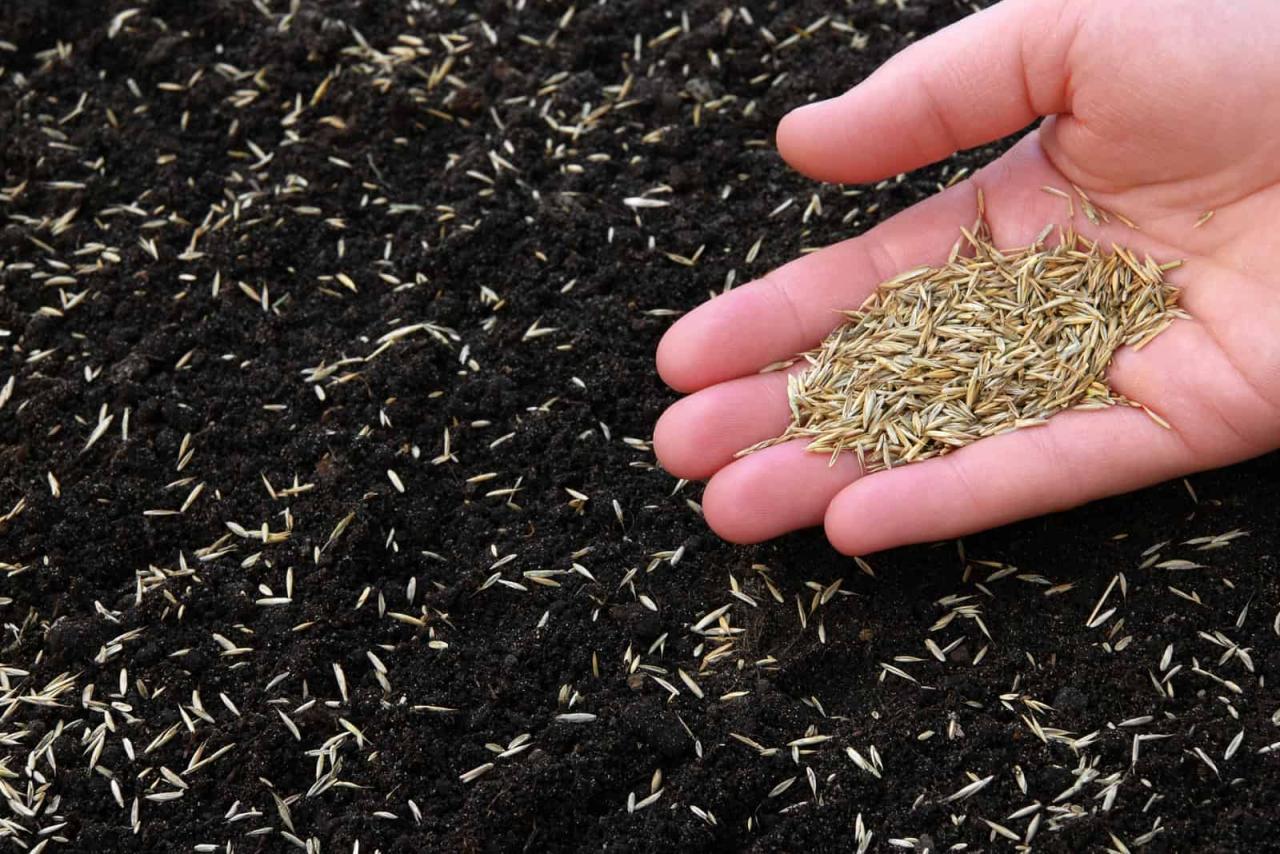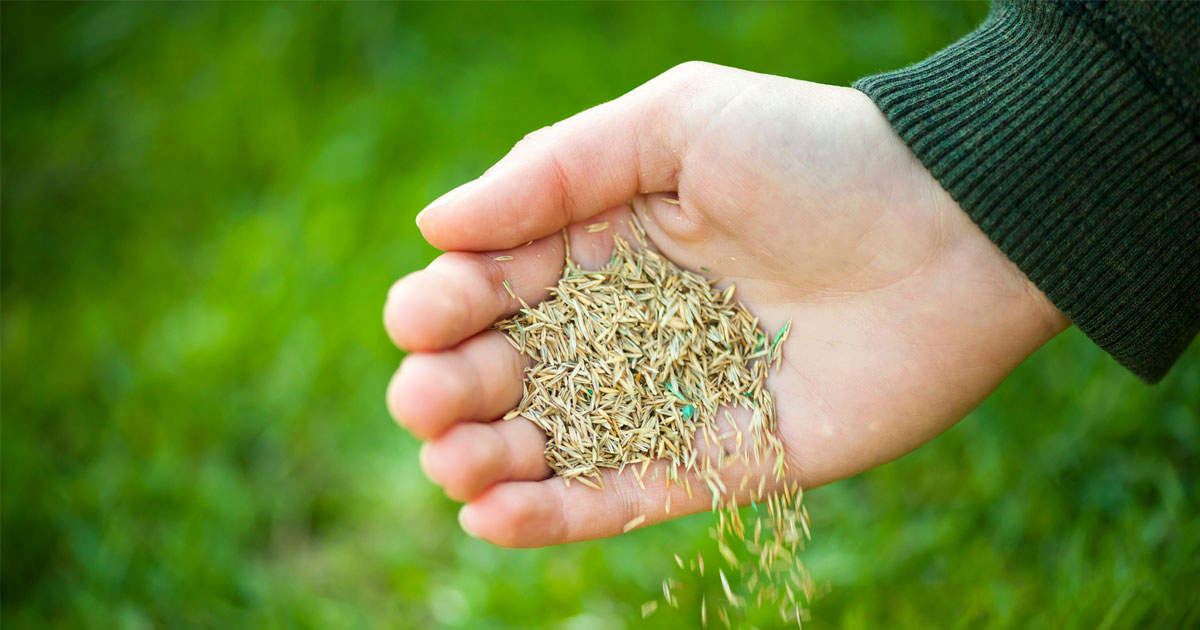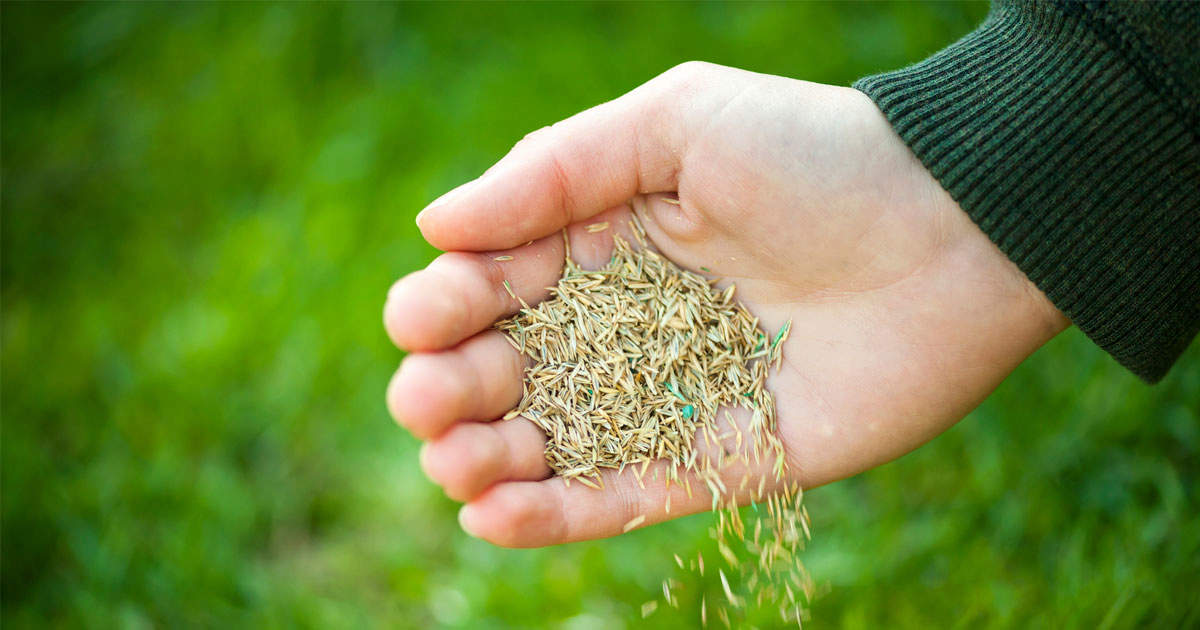Best Time to Plant Grass Seed for Lush and Vibrant Lawn: A Complete Guide – Planting grass seed at the right time is crucial for achieving a lush, vibrant lawn. This comprehensive guide, “Plant Grass Seed for a Lush Lawn: A Complete Guide,” will equip you with the knowledge and techniques to ensure successful grass seed germination and a thriving lawn.
From understanding the ideal temperature and soil moisture conditions for seed germination to choosing the best planting window based on your climate and grass type, this guide covers all aspects of planting grass seed for optimal results. We’ll delve into preparing the soil, selecting the right planting techniques, and providing essential post-planting care, including watering, fertilizing, and mowing.
Understanding Grass Seed Germination
Successful grass seed germination depends on a few key factors. To ensure a thriving lawn, understanding these factors and how they impact germination is crucial.
Ideal Temperature Range for Germination
Different grass varieties have varying temperature requirements for germination. However, most cool-season grasses, like Kentucky bluegrass, thrive in temperatures between 60°F and 75°F (15°C and 24°C). Warm-season grasses, such as Bermuda grass, germinate best in temperatures between 75°F and 90°F (24°C and 32°C).
Soil Moisture for Successful Germination
Maintaining consistent soil moisture is critical for grass seed germination. The seed needs moisture to swell and sprout, and the soil must remain moist throughout the germination process. However, excessive moisture can lead to fungal diseases, so maintaining a balance is crucial.
While a lush, green lawn requires careful planning and attention to detail, including choosing the optimal time for planting grass seed, you can also explore the vibrant world of culinary herbs like perilla leaf. This versatile herb adds a unique flavor to Asian dishes, and you can find helpful tips on incorporating it into your cooking in our guide, How to Cook with Perilla Leaf: Essential Tips for Creating Fresh and Flavorful Dishes.
Once your lawn is thriving, you can enjoy the fruits of your labor with a delicious meal featuring this flavorful herb.
Typical Time Frame for Germination
The time it takes for grass seed to germinate varies depending on the grass variety, soil temperature, and moisture levels. Generally, cool-season grasses can take 10 to 21 days to germinate, while warm-season grasses may take 7 to 14 days.
Best Time to Plant Grass Seed Based on Climate
The best time to plant grass seed depends heavily on your climate and the type of grass you are planting. Warm-season grasses thrive in hot, humid climates, while cool-season grasses prefer cooler temperatures. Understanding the ideal planting window for your region can significantly increase your chances of a lush and vibrant lawn.
Warm-Season Grasses
Warm-season grasses are best planted during the spring and summer months when temperatures are warm. These grasses typically go dormant during the winter months when temperatures drop below 50°F (10°C). Planting them during these colder months will likely result in poor germination and establishment.
- Southern Regions (USDA Hardiness Zones 7-10):In these warmer regions, the best time to plant warm-season grasses is typically between late spring and early summer, from May to June. The soil temperatures are warm enough for the seeds to germinate and establish themselves before the hottest part of the summer arrives.
- Mid-Atlantic and Northeastern Regions (USDA Hardiness Zones 5-6):In these regions, the planting window for warm-season grasses is shorter and typically occurs during the late spring, between May and early June. It is essential to ensure that the soil temperatures are warm enough for germination.
- Northern Regions (USDA Hardiness Zones 3-4):In these colder regions, it is generally not recommended to plant warm-season grasses. The growing season is too short, and the winters are too harsh for these grasses to thrive.
Climate Zone |
Best Planting Months |
|---|---|
USDA Hardiness Zones 7-10 |
May
|
USDA Hardiness Zones 5-6 |
May
|
USDA Hardiness Zones 3-4 |
Not Recommended |
Cool-Season Grasses
Cool-season grasses prefer cooler temperatures and thrive during the fall and early spring. They go dormant during the summer months when temperatures are high. Planting them during the summer months will likely result in poor germination and establishment.
- Northern Regions (USDA Hardiness Zones 3-6):In these cooler regions, the best time to plant cool-season grasses is typically during the fall, between late August and early October. The soil temperatures are cool enough for the seeds to germinate and establish themselves before the first frost.
- Mid-Atlantic and Northeastern Regions (USDA Hardiness Zones 5-6):In these regions, you have two planting windows for cool-season grasses: the fall, between late August and early October, and the early spring, between February and March. The soil temperatures are cool enough for germination during both these periods.
- Southern Regions (USDA Hardiness Zones 7-10):In these warmer regions, the best time to plant cool-season grasses is typically during the early spring, between February and March. The soil temperatures are cool enough for germination, and the grasses have time to establish themselves before the summer heat arrives.
Climate Zone |
Best Planting Months |
|---|---|
USDA Hardiness Zones 3-6 |
Late August
|
USDA Hardiness Zones 5-6 |
Late August
|
USDA Hardiness Zones 7-10 |
February
|
Factors Influencing Planting Time
The ideal time to plant grass seed is crucial for successful germination and a thriving lawn. Several factors, including weather conditions and soil temperature, significantly influence the success of your grass seed planting efforts.
Understanding these factors will help you determine the optimal time for planting in your region.
Weather Conditions
Weather conditions play a significant role in grass seed germination. Rainfall and temperature directly impact the success of your lawn establishment.
- Rainfall: Adequate moisture is essential for seed germination and the initial growth of seedlings. Rainfall provides the necessary moisture for seeds to sprout and establish roots. However, excessive rainfall can lead to waterlogging, which can suffocate seeds and hinder their growth.
- Temperature: Most grass seeds germinate best within a specific temperature range. Cool-season grasses, like Kentucky bluegrass and fescue, thrive in cooler temperatures, typically between 60°F and 75°F (15°C and 24°C). Warm-season grasses, such as Bermuda grass and Zoysia grass, prefer warmer temperatures, usually between 70°F and 85°F (21°C and 29°C).
Planting during extreme weather conditions can pose risks to your lawn establishment. For example, planting during a drought can result in seed dehydration and failure to germinate. Similarly, planting during heavy rainfall can lead to seed washing away or becoming waterlogged.
Soil Temperature
Soil temperature is another critical factor influencing grass seed germination. Seeds require a specific soil temperature range to sprout and grow.
- Measuring Soil Temperature: You can use a soil thermometer to measure the soil temperature at a depth of 2-3 inches (5-8 cm). This depth represents the area where seeds are planted.
- Impact on Germination and Growth: Cool-season grasses generally germinate best when soil temperatures are between 50°F and 70°F (10°C and 21°C). Warm-season grasses, on the other hand, prefer soil temperatures between 65°F and 85°F (18°C and 29°C).
Planting grass seed when soil temperatures are too cold can lead to slow germination and weak seedlings. Conversely, planting in overly hot soil can cause seeds to dry out and die.
Preparing the Soil for Planting

A healthy, well-prepared soil is crucial for successful grass seed germination and a thriving lawn. The soil should be loose and well-drained, with a good balance of nutrients. Before planting, take the time to analyze and adjust the soil to create the ideal environment for your new grass.
Soil Testing
Soil testing provides valuable insights into the composition and nutrient content of your soil. It helps determine the pH level, nutrient deficiencies, and potential issues that might hinder grass growth.
Soil pH refers to its acidity or alkalinity, measured on a scale of 0 to 14, with 7 being neutral. Most grasses thrive in slightly acidic soil with a pH between 6.0 and 7.0.
Interpreting soil test results is essential for making informed decisions about soil amendments. If the test reveals a low pH, you’ll need to add lime to raise it. Conversely, if the pH is high, you’ll need to apply sulfur to lower it.
Soil Amendments
Soil amendments are materials added to the soil to improve its structure, fertility, and drainage. Common amendments include:
- Compost:A rich organic matter that improves soil structure, aeration, and water retention.
- Peat Moss:A lightweight, acidic material that helps improve soil drainage and aeration, especially in heavy clay soils.
- Manure:A natural fertilizer that provides nutrients and improves soil structure.
- Lime:A calcium-based material used to raise soil pH and improve nutrient availability.
- Sulfur:A sulfur-based material used to lower soil pH.
Incorporating soil amendments is crucial for creating a fertile and hospitable environment for your grass seed. You can spread the amendments evenly over the soil surface and then till them into the top 6 to 8 inches of soil. Alternatively, you can mix the amendments with the topsoil before spreading it over the planting area.
Planting Techniques: Best Time To Plant Grass Seed For Lush And Vibrant Lawn: A Complete Guide

Once you’ve determined the ideal time to plant grass seed based on your climate and prepared the soil, it’s time to choose your planting technique. There are two primary methods: seed broadcasting and overseeding.
Seed Broadcasting
Seed broadcasting involves scattering grass seed evenly across the lawn using a handheld spreader or a drop spreader. This method is typically used for establishing new lawns or reseeding bare patches.
- Process:
- Prepare the soil by removing debris, aerating, and raking.
- Apply a thin layer of starter fertilizer.
- Use a handheld spreader or a drop spreader to distribute the grass seed evenly over the prepared area. Walk in a back-and-forth pattern, overlapping each pass by half the width of the spreader.
- Gently rake the seed into the soil to ensure good contact.
- Water the area thoroughly to encourage germination.
- Pros:
- Relatively quick and easy to perform.
- Suitable for large areas.
- Can be used to establish new lawns or fill in bare patches.
- Cons:
- Can be difficult to achieve even seed distribution.
- Higher chance of seed being lost due to wind or birds.
- May require more frequent watering to ensure seed germination.
Overseeding
Overseeding involves spreading grass seed over an existing lawn to thicken it and improve its appearance. This technique is ideal for lawns that have thinned out, developed bare patches, or are experiencing weed problems.
- Process:
- Mow the existing lawn to a height of 1-2 inches.
- Aerate the lawn to allow the seed to make better contact with the soil.
- Apply a thin layer of starter fertilizer.
- Use a handheld spreader or a drop spreader to distribute the grass seed evenly over the lawn.
- Gently rake the seed into the soil to ensure good contact.
- Water the area thoroughly to encourage germination.
- Best Time of Year:
The best time to overseed is during the cool-season growth period for your region. This typically occurs in the fall or early spring, depending on your climate. Overseeding during these periods allows the new grass to establish before the summer heat or winter cold sets in.
Post-Planting Care
Providing the right care after planting grass seed is crucial for its establishment and healthy growth. It ensures the new grass roots develop strong, resulting in a lush and vibrant lawn.
Watering
Consistent and proper watering is essential for newly planted grass seed. It keeps the soil moist, promoting germination and root development.
- Frequency:Water the newly planted grass seed daily, or even twice a day, during the first few weeks. The soil should feel moist but not soggy.
- Depth:Water deeply enough to reach the roots, which are typically about 1/2 inch below the soil surface. This encourages the roots to grow deeper, making the grass more drought-tolerant.
- Time of Day:Water in the early morning hours to minimize evaporation and allow the grass to dry before nightfall, reducing the risk of disease.
Fertilizing
Fertilizing newly planted grass provides the nutrients it needs for healthy growth.
- Timing:Wait for the grass to reach a height of about 2-3 inches before applying fertilizer.
- Type:Use a starter fertilizer specifically formulated for new lawns. These fertilizers contain a higher proportion of phosphorus, which helps promote root development.
- Application:Apply the fertilizer evenly over the lawn according to the product instructions.
Mowing
Mowing newly planted grass correctly encourages its growth and prevents it from becoming too tall and weak.
- First Mow:Wait until the grass is about 3-4 inches tall before mowing for the first time.
- Mowing Height:Set the mower blades to a height of about 2-3 inches. This allows the grass to develop a healthy root system.
- Frequency:Mow the lawn weekly, or more often if the grass grows quickly.
Troubleshooting Common Problems

Even with the best planning and execution, challenges can arise during grass seed establishment. Understanding common problems and their solutions can help ensure a healthy and vibrant lawn.
Poor Germination, Best Time to Plant Grass Seed for Lush and Vibrant Lawn: A Complete Guide
Poor grass seed germination can be frustrating, but identifying the cause is key to addressing it. Several factors can contribute to poor germination, including:
- Improper Seed Depth:Grass seeds need to be planted at the correct depth for optimal germination. If planted too deep, the seeds may not have enough energy to reach the surface. If planted too shallow, they can dry out quickly.
- Soil Compaction:Compacted soil restricts root growth and hinders water and air penetration, hindering germination.
- Poor Soil Quality:Soil lacking essential nutrients or with poor drainage can impact seed germination.
- Incorrect Watering:Insufficient or excessive watering can harm germinating seeds.
- Seed Viability:Old or damaged seeds may not germinate properly.
- Temperature Extremes:Most grass seeds have an optimal temperature range for germination. Extremes in temperature, especially during the initial stages, can impede the process.
- Competition:Existing weeds or other vegetation can compete with newly planted grass seeds for resources, reducing germination rates.
Solutions:
- Correct Seed Depth:Follow the recommended seed depth for the specific grass variety. Generally, most grass seeds should be planted about 1/4 inch deep.
- Improve Soil Compaction:Aerate the soil to improve drainage and reduce compaction. This allows roots to grow freely and promotes better water and air penetration.
- Amend Soil Quality:Conduct a soil test to determine nutrient levels. Add necessary amendments, such as compost or fertilizer, to improve soil quality and fertility.
- Consistent Watering:Water the newly planted seeds consistently, ensuring the soil remains moist but not soggy. Avoid overwatering, as it can lead to fungal diseases.
- Use Fresh Seeds:Purchase fresh grass seed from a reputable source. Check the expiration date on the seed packet.
- Maintain Optimal Temperature:Plant grass seeds during the optimal temperature range for germination. Consider using a seed starter mat or other methods to maintain a consistent temperature.
- Control Competition:Remove existing weeds and vegetation before planting grass seed. Consider using a pre-emergent herbicide to prevent weed growth.
Disease and Pests
Newly planted grass is susceptible to various diseases and pests. Early identification and appropriate treatment are crucial for a healthy lawn. Common Diseases:
- Brown Patch:A fungal disease that causes circular brown patches in the lawn. It thrives in warm, humid conditions.
- Dollar Spot:Another fungal disease that causes small, circular patches of dead grass, often resembling the size of a dollar coin. It favors cool, wet conditions.
- Pythium Blight:A fungal disease that can cause rapid damage, especially in young grass. It thrives in wet, warm conditions.
- Rust:A fungal disease that causes orange or reddish-brown pustules on grass blades. It is often prevalent in humid conditions.
Common Pests:
While the best time to plant grass seed for a lush and vibrant lawn varies depending on your climate, autumn often provides ideal conditions. The cooler temperatures and consistent rainfall promote healthy root development. As the leaves begin to change, consider adding a touch of autumn magic to your home with a stunning DIY leaf garland, like the one found in this article.
This festive touch will complement your new lawn and create a warm and inviting ambiance for the fall season.
- Grubs:Beetles’ larvae that feed on grass roots, causing brown patches and weakening the lawn.
- Chinch Bugs:Small insects that suck sap from grass blades, causing yellowing and eventual death of the grass. They prefer warm, dry conditions.
- Sod Webworms:Caterpillars that feed on grass blades at night, leaving behind brown patches and webbing.
- White Grubs:Larvae of various beetles that feed on grass roots, causing damage similar to grubs.
Preventative Measures:
- Choose Disease-Resistant Grass Varieties:Select grass varieties known for their resistance to common diseases in your region.
- Proper Watering:Avoid overwatering, as it creates favorable conditions for fungal diseases. Water deeply but less frequently.
- Good Air Circulation:Mow your lawn at the proper height and thin out dense areas to improve air circulation and reduce disease risk.
- Fertilize Wisely:Avoid excessive nitrogen fertilization, as it can make grass more susceptible to diseases.
- Control Weeds:Weeds can harbor pests and diseases, so maintain a weed-free lawn.
- Avoid Compacted Soil:Aerate your lawn regularly to improve drainage and reduce disease risk.
Treatment Options:
- Fungicides:Apply fungicides to control fungal diseases. Follow the instructions on the product label carefully.
- Insecticides:Use insecticides to control pests. Choose products specifically designed for the target pest and follow label instructions.
- Cultural Practices:Implement cultural practices such as proper watering, mowing, and fertilization to reduce disease and pest pressure.
Epilogue
By following the guidelines Artikeld in this guide, you can confidently plant grass seed at the optimal time for your region, maximizing your chances of achieving a beautiful and healthy lawn. Remember to consider your climate, soil conditions, and grass type to ensure successful germination and a thriving lawn that will be the envy of your neighborhood.
Questions and Answers
What are the best months to plant grass seed in my area?
The best time to plant grass seed varies depending on your climate and the type of grass you’re planting. Refer to the tables in the guide for recommended planting months for warm-season and cool-season grasses in different climate zones.
How often should I water newly planted grass seed?
Newly planted grass seed needs consistent moisture for successful germination and growth. Water deeply and frequently, ensuring the soil remains moist but not soggy. The exact watering frequency will depend on factors like weather conditions and soil type.
What type of fertilizer should I use for newly planted grass?
Choose a fertilizer specifically designed for newly planted grass, often labeled as “starter fertilizer.” These fertilizers contain a balanced ratio of nutrients to promote healthy root development and growth.
What are some common problems that can occur with newly planted grass?
Common problems include poor germination, disease, and pests. The guide provides troubleshooting tips and solutions for addressing these issues.
